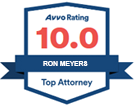Head-on collisions are among the most terrifying and dangerous types of car accidents. They can lead to catastrophic injuries or even fatalities, leaving victims and their families facing a long road to recovery. Understanding how fault is determined in these accidents is essential for anyone involved in a head-on crash, particularly when it comes to filing an insurance claim or personal injury lawsuit.
In Washington state, proving fault in head-on collision claims requires careful analysis and gathering of evidence, and the process can be complex. Knowing the legal steps to take can help protect your rights and improve your chances of receiving fair compensation.
Proving Fault in Head-On Collisions
A head-on collision occurs when two vehicles traveling in opposite directions collide with their front ends. These crashes are often the result of one vehicle drifting into the opposite lane or intentionally driving against traffic. Whether due to distraction, impairment, or other factors, these accidents can be devastating because the full force of both vehicles is directed at each other.
When it comes to head-on collision claims in Washington, the question of who’s at fault must be answered before any compensation can be sought. Washington is an injury liability state, meaning the driver who caused the crash is responsible for the damages. However, proving fault can be tricky, and it’s critical to build a strong case to show that the other driver was negligent.
Here are some of the most common legal steps involved in proving fault in a head-on collision:
Establish Negligence
In a car accident claim, the first thing you need to prove is that the other driver was negligent. Negligence occurs when a driver fails to exercise reasonable care, resulting in an accident. This can happen in a variety of ways:
- Distracted Driving: A driver texting, talking on the phone, or otherwise distracted may fail to notice that they’ve crossed into the wrong lane.
- Driving Under the Influence: Alcohol or drugs can impair a driver’s ability to maintain proper lane control, increasing the risk of a head-on crash.
- Fatigued Driving: Drowsy drivers may struggle to stay awake and focused, causing them to veer into oncoming traffic.
- Speeding or Reckless Driving: Excessive speed or erratic driving can contribute to a head-on crash.
If you can show that the other driver’s behavior contributed to the accident, you’ve taken the first legal step toward proving fault.
Collect Evidence from the Accident Scene
Once fault is established, the next crucial step is gathering evidence to back up your claim. This includes any information that can corroborate your version of events and point to the other driver’s negligence.
- Police Report: When law enforcement responds to the scene, they will document the accident, take statements, and make observations about what happened. A police report can be a valuable piece of evidence when determining fault. Be sure to request a copy for your records.
- Eyewitness Testimony: Statements from witnesses who saw the accident occur can be pivotal in proving fault. If there are any bystanders who witnessed the head-on collision, their testimony can support your version of events.
- Photographs and Video: Photos of the accident scene, vehicle damage, and road conditions are essential for visual proof of the crash’s severity and the positions of the vehicles after impact. Video footage, such as from traffic cameras or nearby businesses, can provide crucial insight into the accident.
- Vehicle Damage: The damage to both vehicles can also help prove fault. In a head-on collision, the force of the crash typically causes significant front-end damage. This can support the claim that the other driver was in the wrong lane.
Use Expert Witnesses and Accident Reconstruction
In particularly complicated cases, an accident reconstruction expert may be needed to recreate the crash and prove fault. These professionals use physical evidence, such as skid marks, vehicle positions, and other data, to determine how the accident occurred. Their analysis can be especially useful when the evidence is unclear or when both drivers share fault for the accident.
For example, if the head-on collision was caused by one driver crossing the center line but the other driver was speeding, an expert can demonstrate how each driver’s actions contributed to the crash.
Establishing Comparative Fault in Washington State
Washington follows a legal doctrine called “comparative fault,” which means that fault for an accident can be divided between both parties. If you’re partially at fault for the head-on collision, your compensation may be reduced based on your percentage of fault.
For example, if you were speeding when the accident occurred but the other driver was under the influence of alcohol, you might be found 20% at fault for the crash. If the total damages in your case are $100,000, your compensation could be reduced by 20%, meaning you would receive $80,000. This is why it’s important to have an experienced personal injury attorney in Olympia who can navigate the complexities of comparative fault and make sure you aren’t unfairly assigned blame.
Dealing with Insurance Companies
Once fault is established, the next step is dealing with the insurance companies. In Washington state, the at-fault driver’s insurance is typically responsible for covering the damages, but proving fault can be a contentious process. Insurance adjusters will often try to minimize the payout to protect their bottom line. This is where an experienced attorney can help. A catastrophic injury attorney will know how to deal with insurance companies, negotiate settlements, and ensure that you are fairly compensated for your medical bills, lost wages, pain and suffering, and other damages.
Filing a Personal Injury Lawsuit
If negotiations with the insurance company fail to result in a fair settlement, you may need to file a personal injury lawsuit against the at-fault driver. This step allows you to take the matter to court, where a judge or jury will determine fault and the appropriate amount of compensation.
In a lawsuit, your attorney will present all the evidence, including witness testimony, accident reconstruction reports, and expert opinions, to prove that the other driver was negligent. You’ll also present evidence of your damages, such as medical records, proof of lost wages, and a record of pain and suffering.
Recovering Compensation
If you successfully prove that the other driver was at fault for the head-on collision, you may be entitled to compensation for various damages, including:
- Medical Expenses: This includes both current and future medical bills related to the accident, such as hospital stays, surgeries, physical therapy, and medications.
- Lost Wages: If your injuries prevent you from working, you may be able to recover the wages you lost as a result of the accident.
- Pain and Suffering: Washington law allows you to seek compensation for emotional distress, physical pain, and diminished quality of life caused by the accident.
- Punitive Damages: In cases of extreme negligence (such as drunk driving), you may also be eligible for punitive damages, which are designed to punish the wrongdoer and deter similar behavior.
Get Legal Help for Your Head-On Collision Claim
Head-on collisions often result in serious injuries and complicated legal cases. If you or a loved one has been involved in such an accident in Washington, it’s essential to work with a knowledgeable personal injury attorney who can help you prove fault and recover the compensation you deserve. From gathering evidence to negotiating with insurance companies, an experienced attorney will fight for your rights every step of the way.
Don’t face this challenging situation alone. Ron Meyers and Associates team is here to help. Contact our team today to discuss your head-on collision claim and get the legal help you need.





